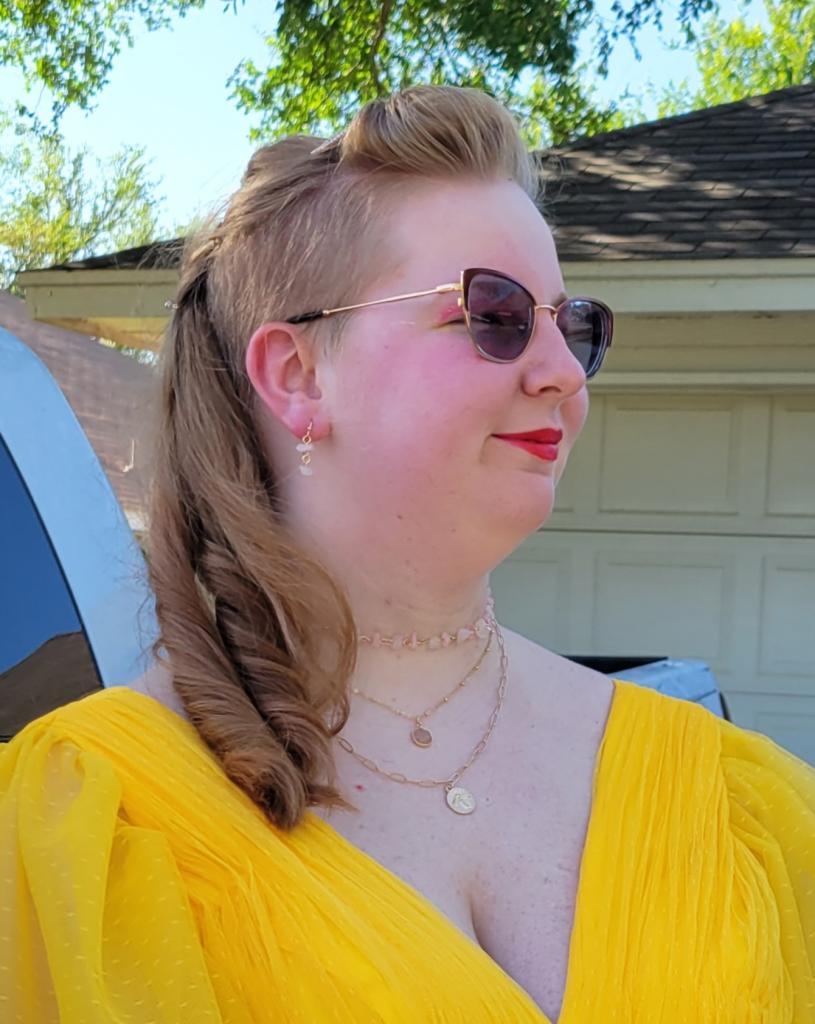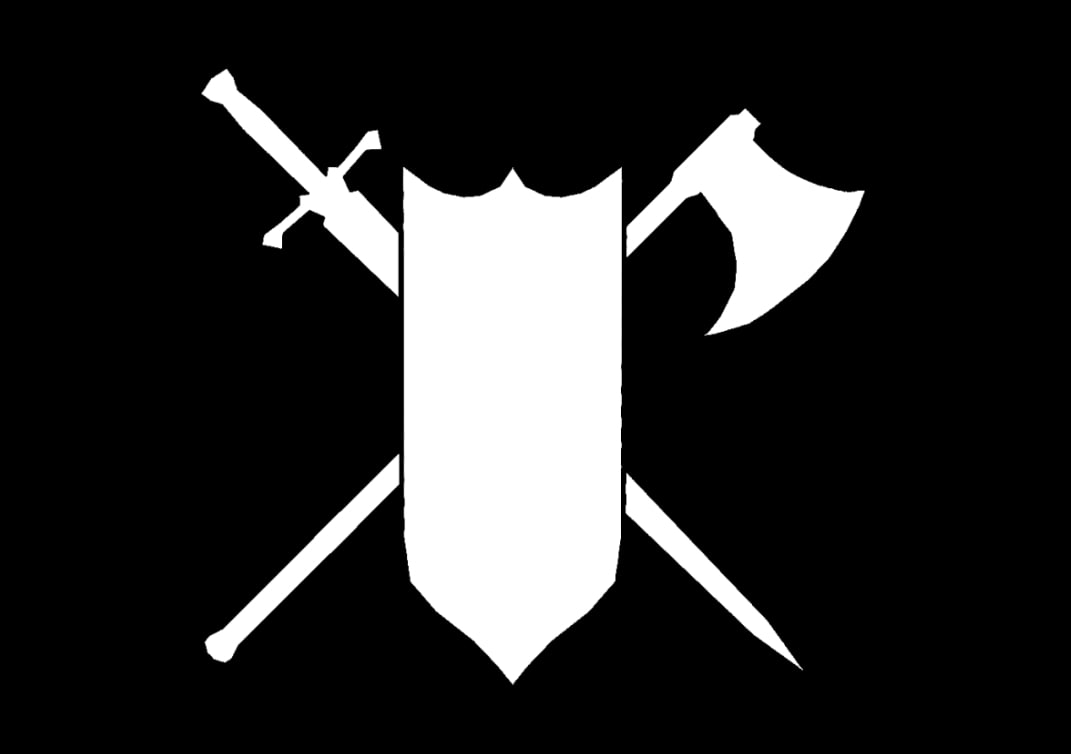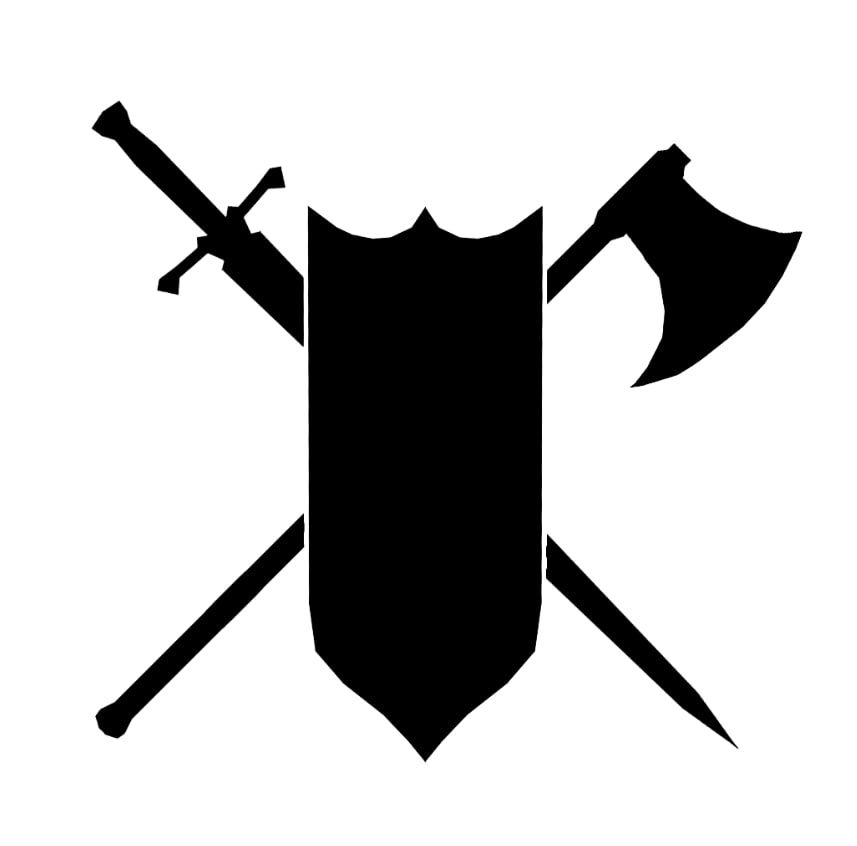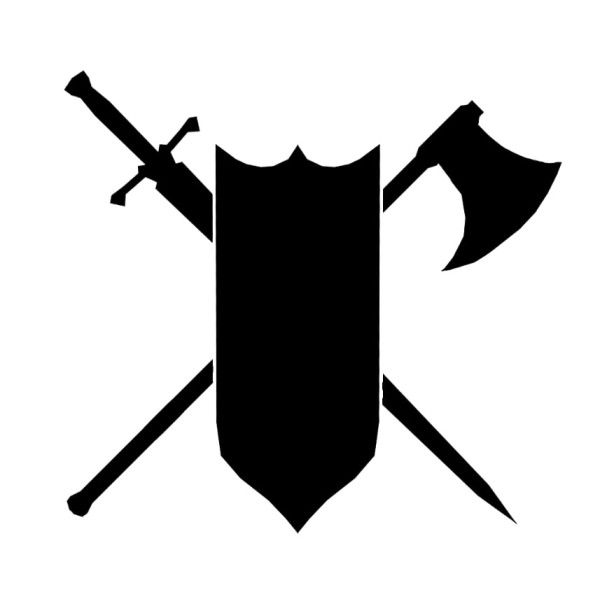
The Fighter subclasses (called the Martial Archetypes) are the combat specializations you can pick from at third level. You pick one subclass/archetype and that subclass explains where and how you learned your skills and gives you several abilities that you will get as you continue to level up.
In this article, we'll reveal the best Fighter Subclasses, ranking all Fighter Subclasses from weakest to strongest.
10) Banneret (OK)
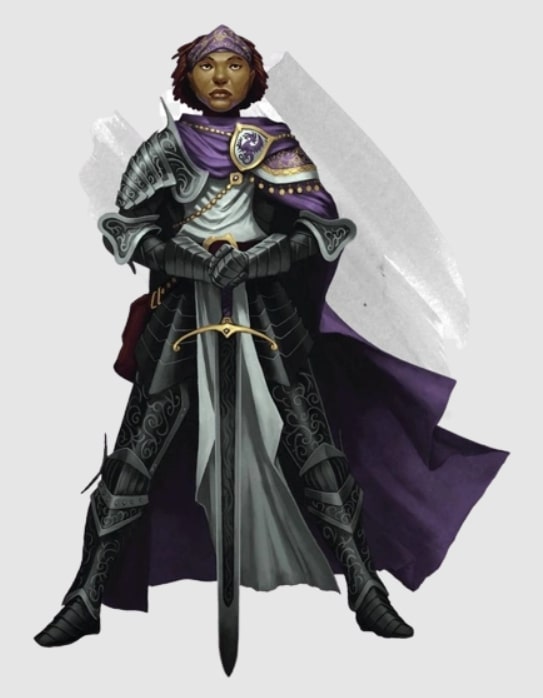
A Banneret is a kind of knight that is skilled in inspiration and leadership. They exist within the Forgotten Realms under the name Purple Dragon Knights, but with the use of the name Banneret (which is the generic name for them), they can be used in other settings as well. Bannerets are supports. Their combat abilities exist merely to support the party, and they get an ability to help their own out-of-combat skills.
Bannerets are at the most okay Fighter subclass. Their skills do not affect personal damage output, attack ratios, or push you into a Strength or Dexterity build. Their skills really do not do much to affect your personal ability in combat at all. While support characters are good, and serve an important purpose, the Fighter class is not designed to be a support class. They also do not get a unique 18th level ability. This is why Banneret is at number ten.
Choose Banneret if:
- Your party does not already have a support player character
- Dnd parties have been made without supports frequently. I have DMed for parties that have had no support characters whether they were an all caster party or an all martial party, so this could help stop that from happening and bring balance to your game
- You have well balanced Strength and Dexterity scores
- Although this does not happen very often, sometimes you end up with equal or near equal Strength and Dexterity. Due to Bannerets not pushing for either a Strength or Dexterity based build, this subclass would be best for stats that are very even
- You intend to multiclass
- Bannerets still get the base benefits of the Fighter class, which are compatible with a lot of classes. Due to them not getting very good upper level abilities, it would make sense to pick this subclass if you intend to multiclass for the main Fighter benefits like Extra Attack
- You are playing in a short campaign
- This once again leads back to them not getting good/unique high level abilities. Short campaigns often mean you do not level up to higher levels (unless you start at higher levels), so you can still get Fighter benefits but do not have to worry about missing out on good high level abilities
- You are playing in a roleplay heavy campaign
- Bannerets are knights, and that can come with a lot of interesting NPC connections and possible rivals, which can help you tie yourself into the world
9) Battle Masters (OK)
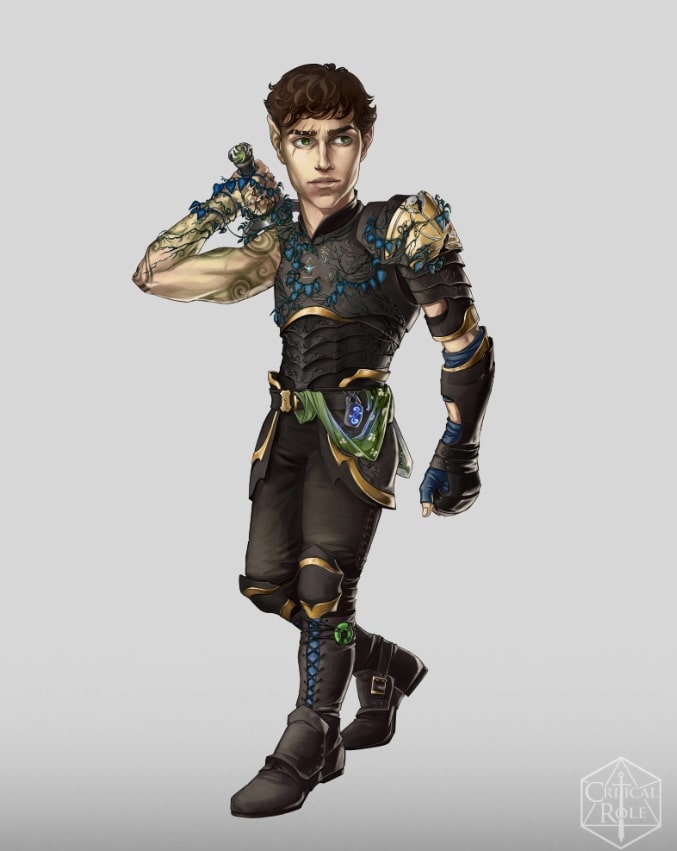
Battle Masters are the Fighters who specialize in the academic understanding of combat. Their knowledge and understanding is passed down through generations, and they are supposed to be well rounded combatants. Battle Masters have a combat style based on knowledge and understanding. They have a very logical approach to combat and their Maneuvers are supposed to allow them to apply their logical expertise to combat situations.
Battle Masters are not a very strong subclass. Despite their popularity and the draw of their Maneuvers, they are very overhyped. There are only a handful of good Maneuvers (despite there being over twenty), and they are another subclass that does not get a unique 18th level ability. It is also somewhat difficult to describe their combat style, as you have to build an entire character to get a feel for it, whereas in other subclasses you can know how they are going to play reading through their abilities. This is why Battle Masters come in at number nine.
Choose Battle Master if:
- There are going to be a lot of unique enemies in your campaign
- The ability (called Know Your Enemy) to gain knowledge of other NPCs and creatures outside of combat is useful if you are going to face a lot of unique enemies because the world often reflects that uniqueness. Learning the traits of your unique enemies from friendly creatures can be very beneficial for when you eventually fight them.
- Your campaign is lore heavy
- Due to Battle Masters being academics, you would likely have an in character reason to know a lot about the world, which is beneficial in a lore heavy campaign
- You are building a Dexterity based Fighter
- Battle Masters often seem to be compatible with Dexterity based Fighters, even though they can be either Dexterity or Strength based. They have a few good Maneuvers that benefit dDexterity based Fighters more, and are better for stealth (a dexterity based skill) missions
- You have the Sage background
- Sages, being the professors of the dnd world(s), are steeped in knowledge, If you were wanting to play a Fighter with this background, Battle Master would make the most in world sense as a subclass
- You intend to multiclass
- Battle Master Maneuvers can be compatible with other classes as well. If you intend to build a multiclass with a Fighter, Battle Master is customizable enough that you could design some very well built multiclasses
8) Samurai (OK)
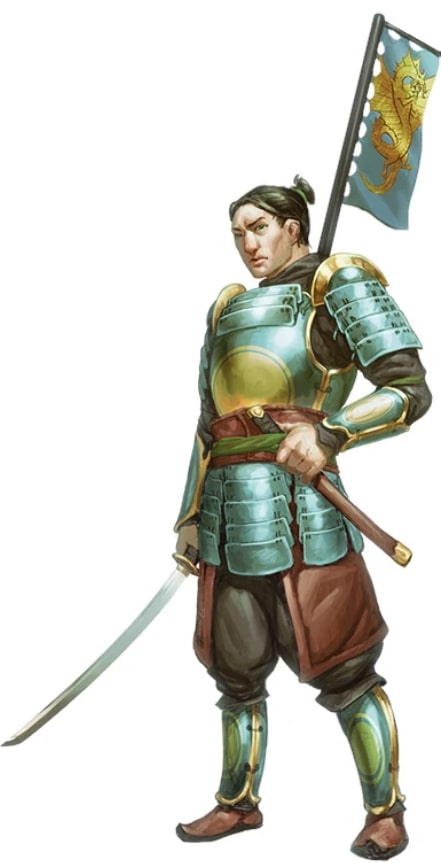
Samurai is a subclass seemingly modeled after the real life warriors of Japan. They get a lot of their skills from resolve and honor, and are good at non-combat skills (as well as having a few skills for combat). Samurai have a very balanced playstyle. They can be either a Dexterity or Strength based build, and have some roleplaying uses as well.
Samurai have the potential to be better, but really land at just okay. Some of their abilities feel counterintuitive (such as Rapid Strike needing you to forgo any earned advantage on the attack you get to use it ), and two of their abilities do not boost your combat abilities, which is not good for Fighters, who are centered in combat. However, they have good flavoring and backstory potential which is what gives them a few extra points to land at eight.
Choose Samurai if:
- You are playing in a roleplay heavy campaign
- You get both a bonus proficiency and an extra bonus to Persuasion checks (that is equal to your Wisdom modifier). Both things are beneficial in a campaign that is bound to have a lot of social situations
- You need a unique character backstory
- Samurai can give you the mechanics required for an interesting noble trained in the ways of combat, or you can find lore and roleplay based reasons for your good understanding of social situations on top of your combat skills
- Your party does not have a Charisma based character
- Due to the bonus to persuasion you get at level seven, you can have a way to help your party out in social situations if you do not already have a character who is good at Charisma and/or Charisma based skills
- You have well balanced ability scores
- If you have decently high ability score numbers in both physical and mental (particularly Wisdom) stats, this is a great subclass for you as it has abilities that benefit both realms
- The combat you face has very challenging enemies
- Particularly if you aim to play a high level Fighter and are going to face a lot of challenging enemies, Samurai is a good fit for you. At 18th level, if you drop to zero, you can immediately take another turn before you drop, which can truly benefit your party as you can help continue to deal damage before you make death saving throws, which would hopefully end combat quicker
7) Champion (good)
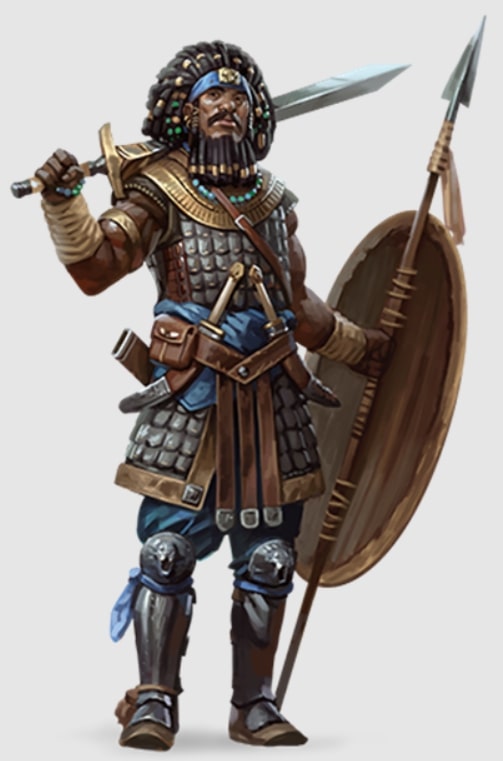
Champion is the stereotypical Fighter subclass. They come straight from the Player’s Handbook and are all about honed physical skills. They are simple, and are good for purely physical builds (Strength, Dexterity, and Constitution). Their playstyle is very mechanical. It is good for damage output and managing combat.
Despite being the subclass most players think of when they think of Fighters, Champion finds itself at seven. This subclass does not allow for a lot of uniqueness or flavor, and is very rigidly mechanical. There are also other subclasses a little better for damage output despite their improved critical. Their self healing 18th level ability is very good though, and its simpleness can serve a good purpose. These good things are what bump it up to seven.
Choose Champion if:
- It is your first time playing a Fighter
- Champions have very simple, straightforward abilities. If you have never played a Fighter before, they are a good first time subclass because they will give you a better understanding of the class without extra complicated mechanics
- You are a first time player to the whole system of Dungeons and Dragons
- Similar to the first reason, but on a bigger scale. Dungeons and Dragons can be a very complicated game, and there are a lot of things that can prove to be very overwhelming. Champions are good for first time players as they do not involve spellcasting and are overall very straightforward
- You are playing a oneshot
- Due to Champions not having a lot of ties to in-game lore, they have a reputation for being boring and can be kind of a challenge to make unique. Oneshots often do not require very complex backstories, which can help negate the stress of needing to be unique with Champions if you want to play one
- You are the only front line man
- Champions get improved criticals, often have better damage outputs because of it, eventually get to have two fighting styles, and eventually self heal at the start of every turn. If you are the sole front line man, those abilities will help you manage with support from your caster and long ranged martial party members as you will be able to fair well with just your own abilities
- You have a bad Dexterity stat
- At seventh level you get to add half your proficiency bonus to Strength, Dexterity, and Constitution checks that you do not already have proficiency in. If you have a lower Dexterity (as this subclass is best intended for a Strength based build) score, this subclass can help you fix that
6) Psi Warrior (good)
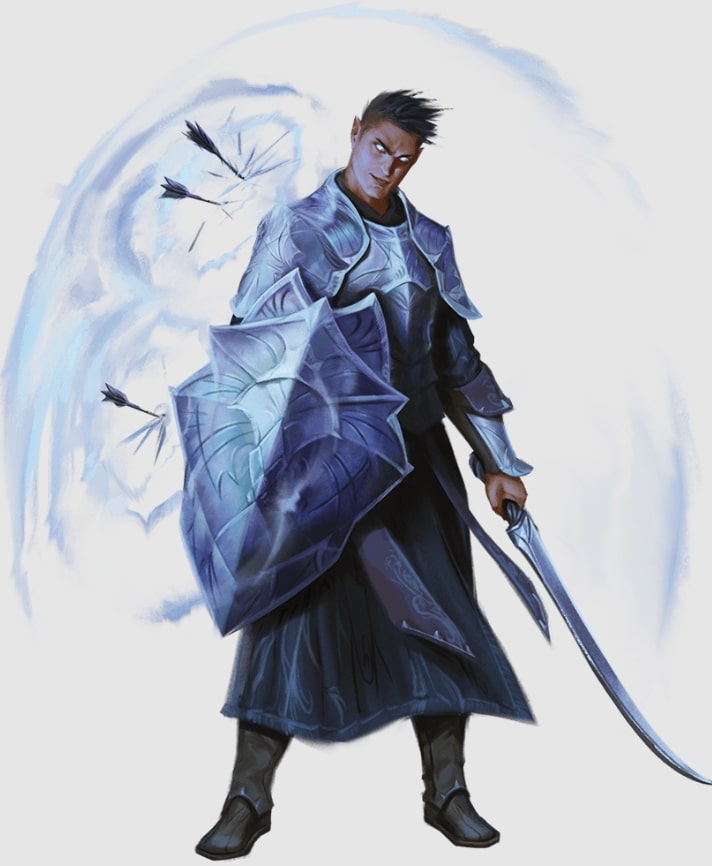
Psi Warriors are Fighters with psionic (mental/telekinetic) abilities, which can be learned through solo training, a master’s instruction, or through an academy. Psi Warriors have a unique style that allows you think outside the box and bring your Intelligence stat into the mix as you fight and navigate the world.
Despite the interesting sound of this subclass, Psi Warrior lands at only six. One ability allows you to buff your damage, and some of the protective abilities offered are good, however a lot of these abilities can be very hit or miss in combat. A lot of the abilities are more geared towards support. They can be a lot of fun to play though, and lead to some unique situations. They can also help you find unique ways to tie yourself into the world, which earns them some points. These things combined is what lands them at six.
Choose Psi Warrior if:
- You have played a lot of Fighters and are looking for something new
- Psi Warriors are a fresh take on the Fighter. Even though I may think they are not always the best suited to combat, their telekinesis can spark a new love for the Fighter class as a whole as you get to approach combat with a new mindset and you get to think outside of the box
- You are not playing a traditional fantasy based campaign
- Dungeons and Dragons settings are made up by DMs constantly, and not every DM likes traditional fantasy. Psi Warriors would be great for a sci-fi or space based setting especially, but could fit into the lore of other genres very easily as well
- You have a good Intelligence ability score
- A lot of Psi Warrior abilities are fueled by Intelligence. If you have a high Intelligence ability score, you could be a very successful Psi Warrior
- Your DM allows for more flexible and creative combat moves
- The telekinetic abilities Psi Warriors get can be used to throw things at enemies, cause you to fly, and to possibly knock your enemy prone. All of these things can be used uniquely in combat to change the pacing and make it more enjoyable, especially if your DM encourages that kind of creativity
- You deal with stealth missions regularly
- Some of the telekinetic abilities you get can be great for distractions to help you and your party sneak past guards and monsters alike, making stealth more likely to go well for you and your party
5) Cavalier (great)
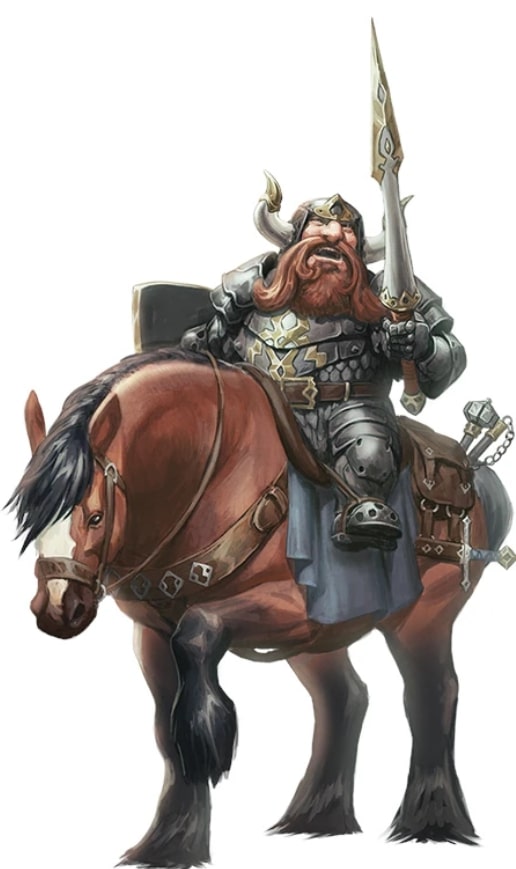
Cavaliers are knights skilled in mounted combat. They often come from noble backgrounds in canon lore. They have a protective play style, benefitting both you and your other party members, but still excel in combat. Plus they come with the bonus of being skilled at mounted combat, and who would turn down a horse?
Cavaliers come in at five. They are one of the better knight subclasses. The ability to do mounted combat more successfully and more resiliently can protect you in combat. However, they are designed as more of a support subclass, which is not what Fighters are intended to be. The support is based on how they perform in combat, but they are still a support nonetheless, which is what is holding them back from being higher on the list.
Choose Cavalier if:
- Your party has a lot of casters
- Cavaliers can give buffs to other peoples’ armor class, can impose disadvantage on enemies (if they attack someone other than you) after attacking said enemies, and you can take opportunity attack reactions on other people’s turns. These are very beneficial ways to protect casters, who tend to have lower armor classes and less hit points
- You are the sole front line man
- When you are the sole front line man, it can be good to have the enemies focus their hits on you. It can give your casters and/or long ranged martial allies the ability to deal damage without bringing the fight to them
- You are playing in a traditional fantasy campaign
- Cavaliers are great for a traditional fantasy setting because they would be a great choice for a traditional knight character
- You fight a lot of enemies
- If the combat you face frequently has a lot of enemies each time you fight, having the ability to do things like knock enemies prone if you move at least 10 feet straight to them, being able to impose disadvantage, and being able to attack enemies if they deal damage to another party member can make it much easier to take down enemies faster
- You are play in a roleplay heavy campaign
- Cavaliers give you lots of opportunities for NPC connections, and you could give yourself an interesting backstory as a knight. You could also tie yourself into the politics of the setting which is always very interesting
4) Arcane Archer (good)
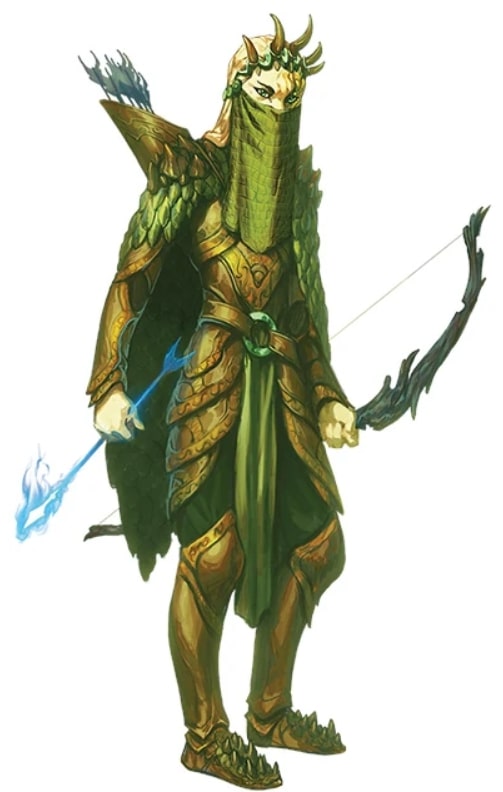
Arcane Archer is a subclass that has magic be a part of your weapon attack. It is a skill that originates from Elven society in canon lore. This subclass has a more agile/dexterous play style, as it requires a Dexterity build to be an archer. It boosts your damage and makes you a more effective long range combatant.
Arcane Archers come in at four. They do not get a unique 18th level ability and they do not get more uses of their Arcane Shot (a way to deal extra damage magically, such as poison damage) as they level up despite getting more options for said ability. However at 15th level you get a renewed use if you roll initiative with no uses. Despite these negative things, you can overcome magic resistance, and your damage output becomes very good. You can also use missed attacks to your advantage on bonus actions. These positive things outweigh the negative things, putting Arcane Archer at number four.
Choose Arcane Archer if:
- You often fight magical enemies
- Magical enemies often have resistance to non-magical damage, but at seventh level and above, you can make your arrow attacks count as magical to bypass that resistance, making it easier for you to damage your enemies
- You want a Dexterity based build
- The use of a bow requires a good Dexterity to accurately use it. If you want to push a high Dexterity build, this subclass would pair well with it
- You want to increase your damage output
- The extra damage you can deal twice per long rest can help you increase your damage output
- You want to tie your character into the world better
- Particularly if you are playing an Elf or Elven-raised character in a canon dnd setting, you can use this class to make your backstory better fit the build as Arcane Archer comes from elven skills in canon dnd lore
- You are playing in a magic heavy campaign
- This allows you to include some magical effects in your attacks without having to be a caster (if that is not your speed) while still fitting in with the setting
3) Eldritch Knight (great)
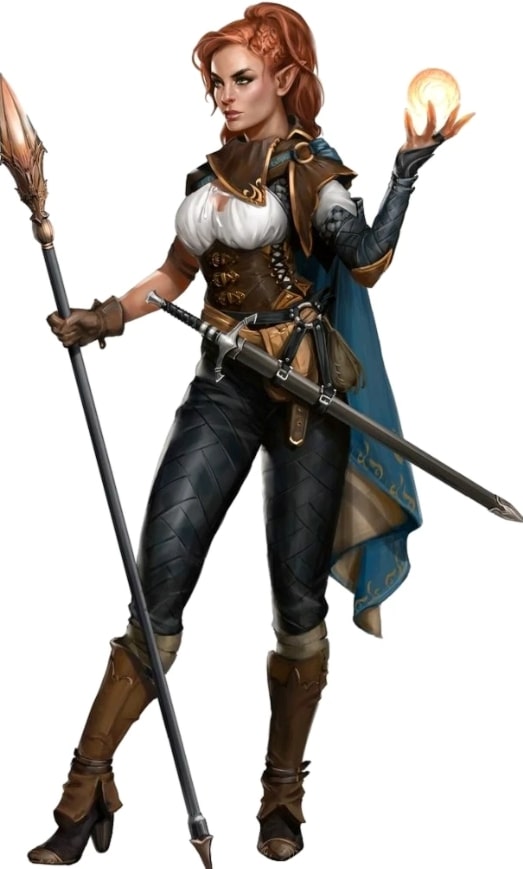
Eldritch Knight is the subclass that blends the pure martial idea of a Fighter with a Wizard’s spellcasting ability. Eldritch Knights are half casters, as they do not get access to the full leveling of spells. Their play style can be kind of complicated as you have to learn how to balance between your spellcasting and your martial abilities, but it can be a very fun mix of magic and swords. This build requires a blend of good Strength/Dexterity and Intelligence.
Eldritch Knights are a great subclass. Their abilities compliment each other well and are great for improving your skills in combat. They are also unique and you get a unique 18th level ability. However, it should be easier to use your leveled spells and your weapons together. It lacks the balance that it requires, which is why Eldritch Knight is at three and not higher.
Choose Eldritch Knight if:
- You are playing in a magic heavy campaign
- This subclass lets you fit in with a magic heavy setting as you get access to leveled spells and cantrips, but still lets you enjoy a skilled martial character as well
- You have a good Intelligence stat
- Eldritch Knight requires you to have a good Intelligence ability score as it is your casting ability, so if you have a good Intelligence ability score (at least a 14), this subclass would be a good fit for you
- You want to increase your damage output
- As you get War Magic (which allows you to make a bonus action melee attack after casting a cantrip and then eventually a spell as an action), you can have an improved damage output and deal more damage regularly
- Your party does not have a caster
- While this does not happen often, it does happen. Casters help greatly with party damage output and keeping the party and themselves alive with healing. If you do not have one it can affect the success of the party, and this subclass could help balance out your party
- You are playing in a combat heavy campaign
- Combat heavy campaigns can sometimes be hard to manage without the added help of magic as your abilities get more quickly worn out. Due to having access to magic, you can end combat faster and reserve some of your Fighter abilities
2) Rune Knight (great)
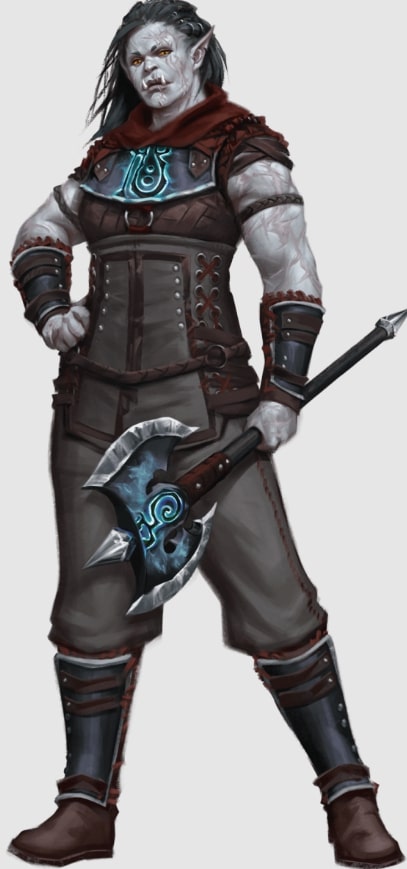
Rune Knights are Fighters who learn to enhance their combat abilities by learning runes, which is a king of magic that originated with Giants. Rune Knights work best with a Strength based build, as you can maximize the damage output you can get the best. You also get the bonus of magic without having to manage spellcasting.
Rune Knights are a very good subclass. Being able to get access to runes that give you elemental based magic is very good, as well as getting a proficiency in smith’s tools that is actually useful, as you actually have to carve the ruins on an item you wear or carry to get them to work. I do think their abilities as you level up should be more unique (as they often just buff your earlier abilities, which should just be built into the ability instead of taking up a level up ability). This is what puts them at two instead of one.
Choose Rune Knight if:
- You want to increase your damage output
- You gain an ability called Giant’s Might that allows you to deal extra damage with one of your attacks per turn while you have it activated, which can help you increase your damage output. The Fire Rune also will help you increase your damage output by allowing you to restrain an enemy with fiery shackles
- You want to play a Strength based build
- Rune Knights are best suited for Strength based builds as the subclass is geared towards the strength and ability of Giants
- You are playing giantkin
- This subclass would be an interesting way to tie in your giantkin character to the setting, as the magic you gain comes originally from Giants. It would help you tie yourself to the lore of the setting
- You are playing a magic heavy campaign
- Getting magical abilities from your runes allows you to fit more into the setting and possibly keep up with the magic around you without having to compromise the want to play a martial character
- You want a unique backstory
- There are lots of options you could choose for having magic originating from Giants, whether it be through a mentor or accidental discovery or it being an integral part of your Firbolg clan, it can be a great inspiration for a character backstory
1) Echo Knight (best)
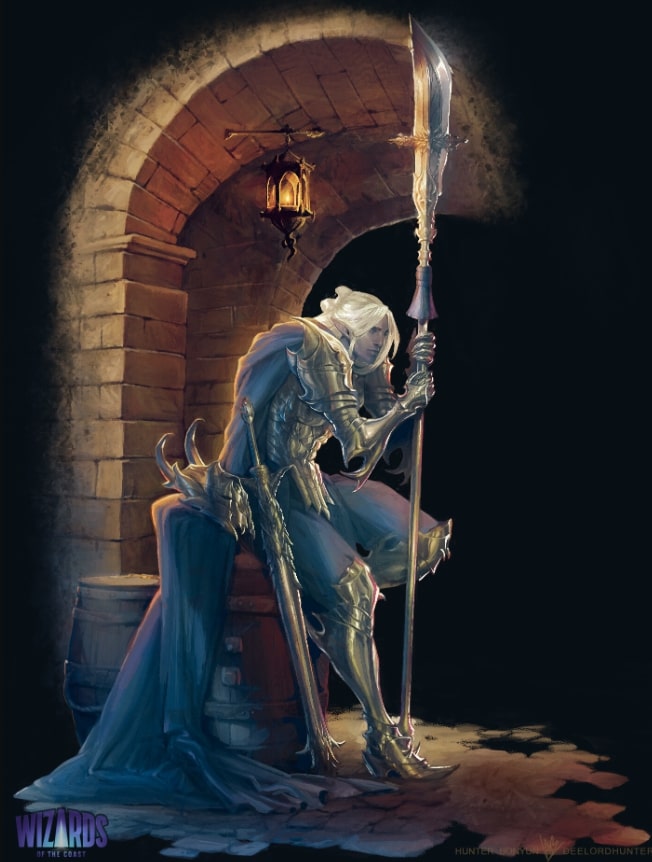
Echo Knights come from the Critical Role setting of Exandria, but do not have to just be used in an Exandria campaign. They use a power/magic called dunamancy to learn how to be in two places at once by learning to manipulate timelines. Echo Knights can be a Dexterity or Strength based build, and have a very involved playstyle. They have a lot to track, but they have a lot of uses that are very helpful in and out of combat.
Echo Knights are an incredibly powerful subclass. They are very unique, and the ability to summon an Echo (which is essentially a different you from another timeline) helps with damage output and non-combat missions. You can also protect your party members without being fully a support character, and you can also pull back and not have to be so close to combat.
Choose Echo Knight if:
- You are playing a Fighter in an Exandria campaign
- I think that if you are playing a Fighter in an Exandria campaign, there really should not even be other options that you consider. They are very compelling lore wise and can give you a lot of plot hooks, and are also very useful in combat
- You are playing in a balanced campaign
- Echo Knights have such a good use for non combat and combat missions. They are designed and balanced well, and if you are playing in a campaign that does not favor one or the other, Echo Knights are perfect
- You are trying to increase your damage output
- You can use the Echo you summon to make a number extra attacks equal to your Constitution modifier every long rest, as long as you make the attack action first. So this on top of your Action Surge can be very useful in increasing your damage
- You fight a lot of magic enemies
- You can make your attacks from your Echo’s position, which means you can hang back in the fight and keep yourself out of danger (or at least 30 feet from it) while still fighting the enemy
- You fight a lot of enemies every time you encounter combat
- As you can be in two places at once, you can take on multiple enemies at once no problem. You can also use your reaction to make an opportunity from your Echo’s position, which means that you do not have to worry about losing damage to the other enemy if they move away from you. Echo Knights can make fighting a lot of enemies much less overwhelming
You may also be interested in:
- The Best D&D Classes (Ranked from Worst to Best)
- Top 25 Best D&D Villains of All Time
- 32 Most Interesting Facts About Dungeons and Dragons!
- 25 Best D&D Games for PC That Every Fan Must Play!
- The 10 Best DnD Streams
- Most Powerful D&D Dragons For Adventurers To Defeat
- Top 10 Best DnD Campaign Ideas
- Top 5 DnD Most Useful Languages
- D&D Top 10 Most Damaging Spells That Obliterate Foes
- Top 15 Most Powerful D&D Spells
- The Best D&D Race for Every Class
